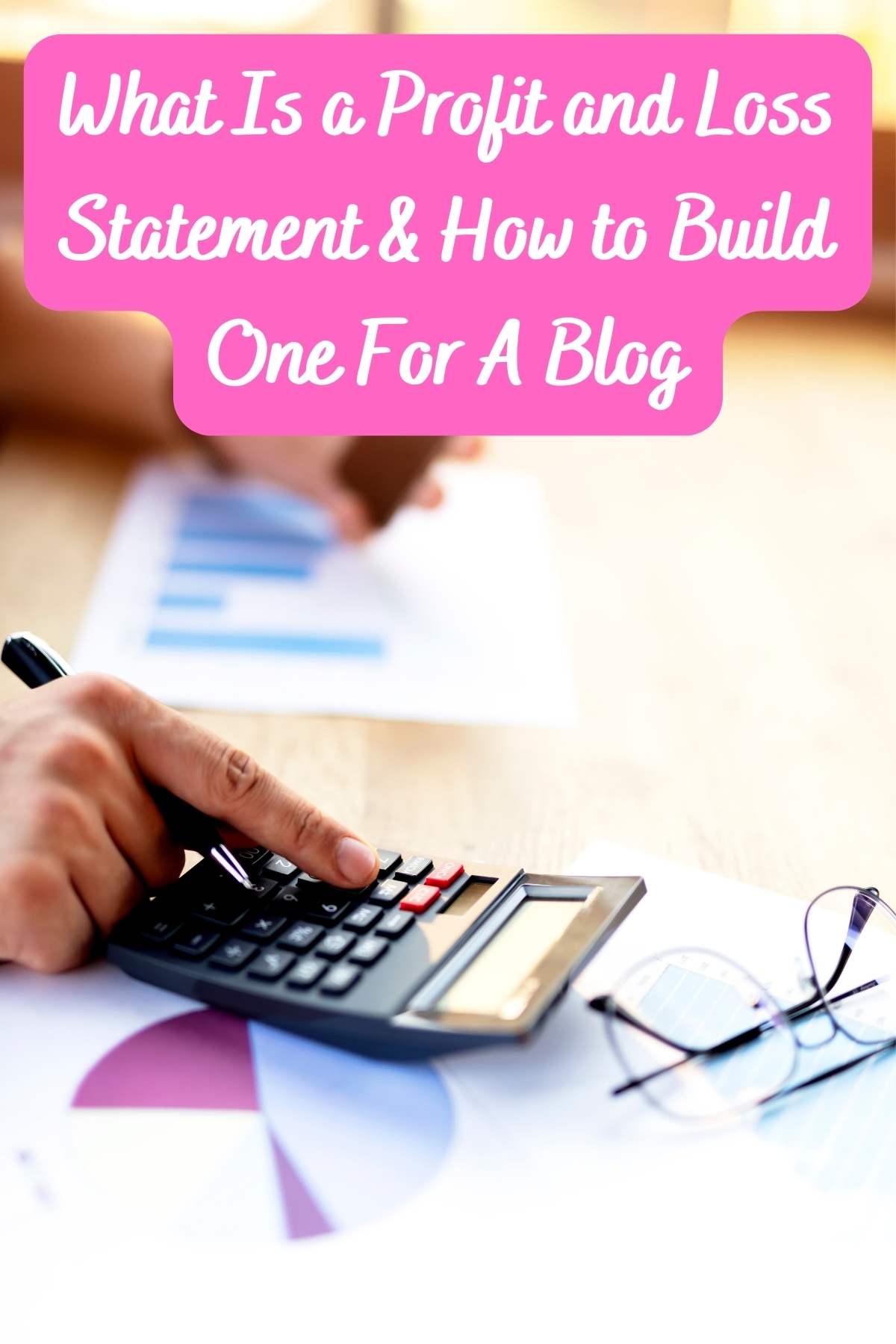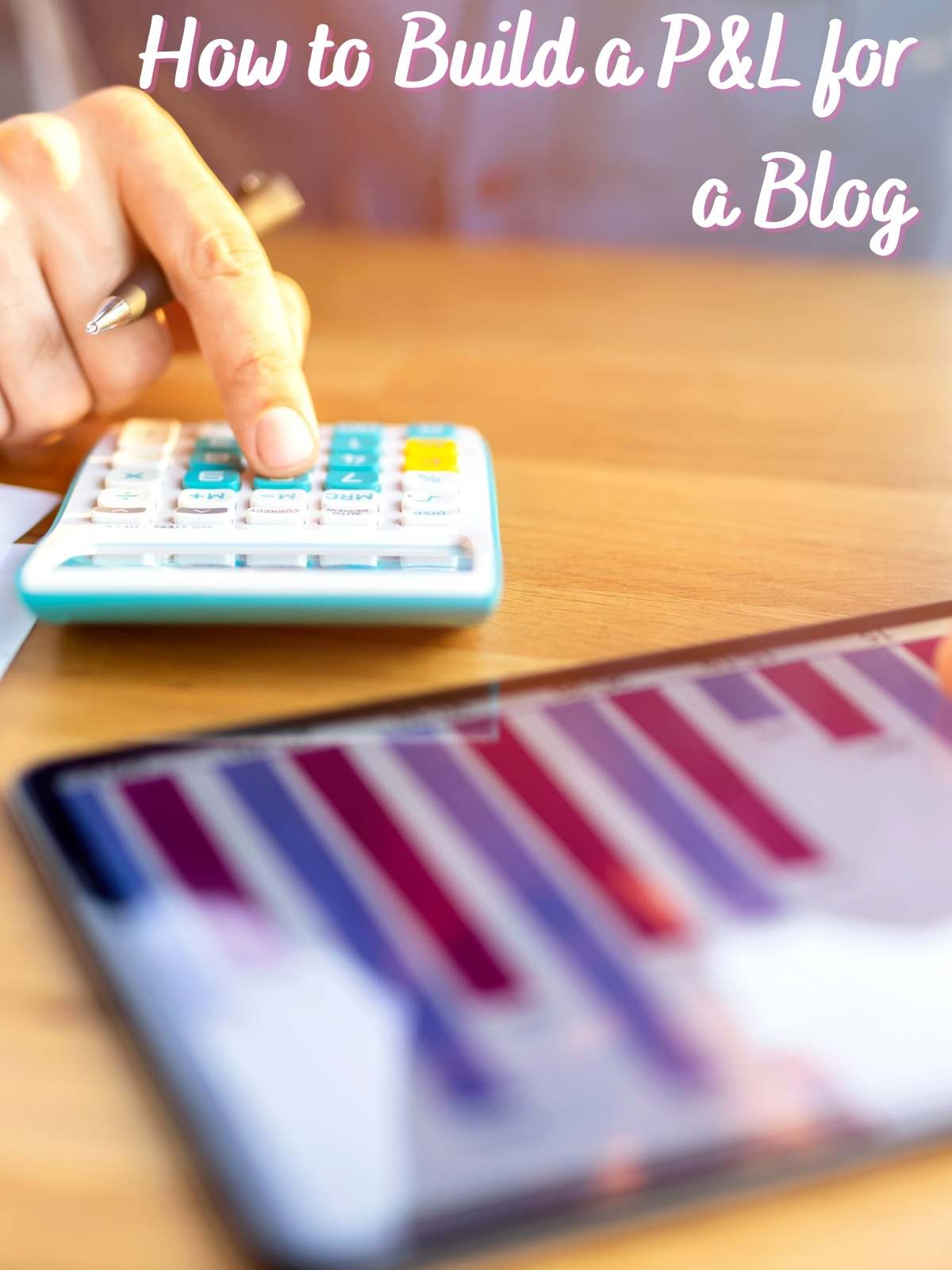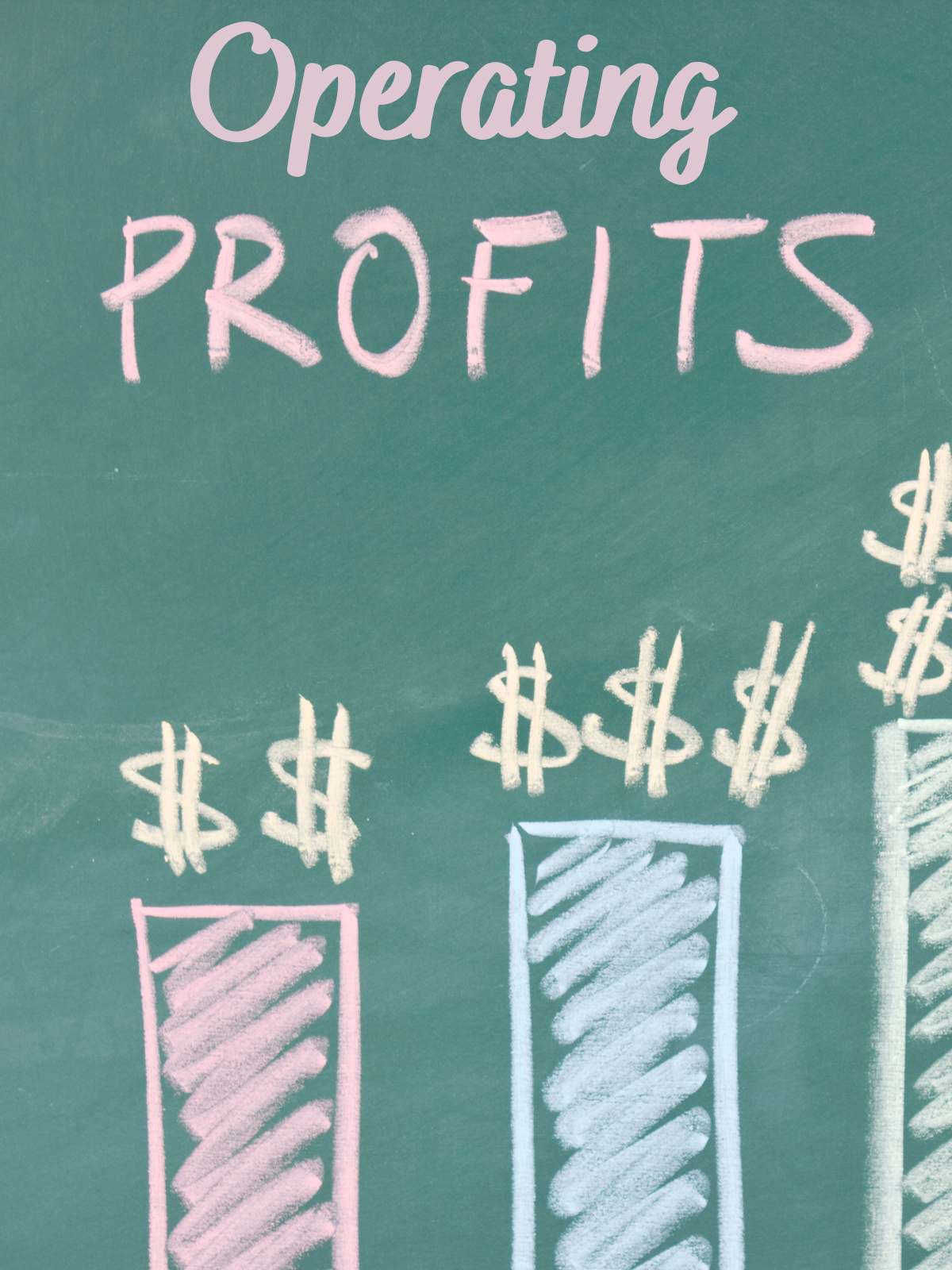Inside: What is a profit and loss statement and how to build one for your blog.
I think one of the most stressful things about running a blog during your first few years has to be money. I know… big shocker there. The infancy of your blog is likely to be a time when you are not making any money.
As time goes on, you will be able to clearly see where you make profits and where you are losing.
It’s important to keep track of this from the beginning!
This information is super important for your business. You can use it to determine how well your business is doing, what areas need more help, and which ones are thriving. You’ll also need it completed if you ever decide to sell and I can attest from experience that it is much harder to do backwards. 😉

Building one can be a little tricky, so today, I wanted to walk you through how I do mine. Hopefully, this will make you feel confident enough to do your own.
Remember, the first few years are supposed to be a little tricky. You can do this and use it to crush your goals!
What Is a Profit and Loss Statement?
What exactly are we talking about here? I think this is a great place to start. As I am sure you already guessed, a profit and loss statement defined is essentially a record of where your business makes a profit or takes a loss.
According to The Hustle,
“A profit and loss statement, or P&L, is a financial document showing a business’s monthly, quarterly, or yearly revenue, profit, and losses. It identifies a company’s financial health for internal decision-making or entices buyers and investors to purchase or fund the business. “
An income report is essentially the same thing as a P&L, so don’t confuse the two. They are one and the same.

How to Build a P&L for a Blog
Building a profit and loss statement for your blog is pretty straightforward. You can either do it yourself with google sheets, excel or you can use an accounting tool. I have a list of great ones below, I personally use Quickbooks.
But those of you who want to DIY and do this yourself, continue reading – I’ve even given you a sample one to use.
Numbers to Track Down
The list below is some numbers that you are going to need to have on hand when you are building your P&L statement. They should be pretty simple to find. I will give you some examples of each.
1. Operating Revenue
Your operating revenue is the amount of money that you get paid overall. This number is not going to take into account any of your other expenses or anything yet. You are going to want to isolate it.
To help better explain, I am going to give you some hypothetical numbers. These are going to act as your visual aid so that you understand what I am talking about. This stuff can get confusing pretty quickly.
Okay, my starting revenue number is $20,000. This is the number that is deposited into my bank throughout the year. Now that we have that number let’s move on to the next section.
2. Cost of Goods Sold
Next, we are going to cover the cost of goods sold. If you have a blog that sells products, this is your time to shine. Think of every piece of machinery you had to buy to start your blog. You may have invested in a laptop or some editing software. If not, you can wait until the next section to add more information.
Now, it cost me $6000 to make all of the goods that I was selling. This number is still being isolated, and you don’t need to do anything with it yet; just write it down in the proper section.
3. Gross Profit (revenue minus cost of goods)
Next, we are going to find our gross profit number. To do this, we are going to take our revenue and subtract the cost of goods from it. The number you are left with is your gross profit number.
For example, I will take my $20,000 and subtract the $6000 that it costs to make the goods. This means that my gross profit was $14,000.
4. Operating Expenses
Next, we are going to find out how much we spend on our operation. This can include things like your subscriptions, your hosting fees, and more.
Think about what you have to spend monthly and yearly to keep the space on the internet for your blog.
For my hypothetical blog, this cost me around $2000 a year.

5. Operating Profit
Now we are going to find our operating profit numbers. To do this, take your gross profit and subtract your operating expenses from it.
The number you are left with is your operating profit.
For my blog, that was $14,000 – $2000, which left me with an operating profit of $12,000.
6. Net profit
For this last one, you are going to take the number from your operating profit and subtract any debts or taxes that you may have to pay eventually.
That will look like this:
$12,000 – $2000 (for taxes and debt) = $10,000. So my hypothetical blogging business makes about $10,000 per year.
That is literally half of what I started with. This statement will tell me a lot about where all my money is going and whether or not I am spending it wisely.
How To Use Quickbooks For Reporting
If you want to make this even simpler, I suggest you sign up for Quickbooks and connect it with your business bank account. This is how I run all my online businesses now and it makes it so easy!
Once a week I go in and make sure everything is categorized correctly and it will create a beautiful profit and loss for you. Plus it allows you to run all types of special reports etc within the app.
You can even track receipts for tax purposes etc. with it.
What Is a Profit and Loss Statement
Now that you know how to create your profit and loss statement, you may be wondering how you can use this information to better your business. This is simple.
Really examine each of your sections. Pay attention to where your money is going. In order to be a more successful business, what needs to change?
- Do you need to cut back on the cost of your goods?
- Or perhaps you just need more overhead revenue.
- How can you fix that with your blog?
If you think you need to cut and run, perhaps it’s time to sell.
I have many ideas that you can use to help make your blog successful. You can start to pay attention to your KPIs or learn more about SEO. Both of which I cover in detail for you.

So, now do you understand why a profit and loss statement is so important? It will give you insights into how your business is doing, what areas need help, and which ones are thriving.
This information can be used to help keep your blog successful in the long run. You want to make sure that your blog is bringing in at least a little bit more money than it is taking out. Otherwise, it’s a negative investment. I want your business to thrive as much as you do, so use & listen to these reports! They will help you.
I would recommend filling one of these out every quarter just to see how things are going and if you need to make any adjustments to the way you are doing things.
Knowing where you are at financially is one of the most important things you can do as a business owner. At the end of the day, that is what your blog is… your business.
